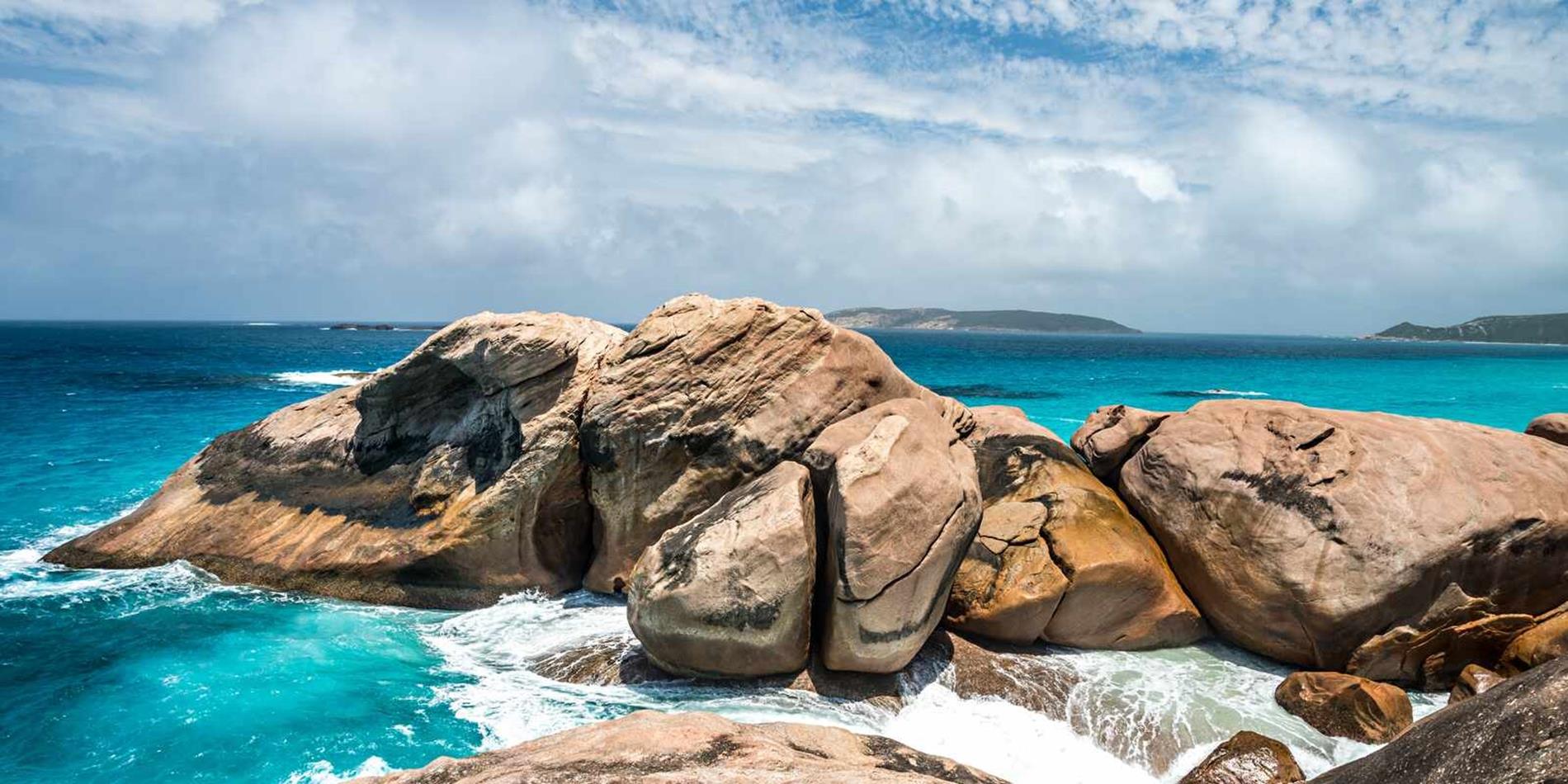Discover Western Australia's Shark Bay
Dugongs, dolphins, turtles: marine life is just one attraction in the World Heritage-listed paradise of Shark Bay. Fleur Bainger reveals the top things to see.
Take a look at Shark Bay’s numbers and try not to do a double-take. The World Heritage Area counts 323 fish species and 80 types of coral within its aquatic boundaries, while fewer than 1,000 people call the 2.2-million-hectare Western Australian shire home. There’s also a beach 10 metres deep in fingernail-sized shells and, just nearby, rock-like life forms called stromatolites, estimated to be some 3,000 years old, lurk in the shallows. Yet for all those jaw-dropping figures, it’s the pod of 200-or-so Indo-Pacific bottlenose dolphins that pull the crowds.
Shark Bay’s remote double peninsula protrudes like two fingers from Western Australia’s side. The
country’s westernmost point is saturated with paprika-hued earth that radiates colour through the gaps between spinifex, and emu-dotted scrub, and contrasts with pale, blissfully empty beaches. Its playful cetaceans are found cruising the azure waters of
Monkey Mia, their dorsal fins flashing a greeting to those gazing towards the horizon. Each morning, a handful of them swing past the sandy stretch in front of
Monkey Mia Dolphin Resort to bob in the shallows. Their visits grant an up-close experience that people travel from around the world for. Three times between 7.45am and midday, DPAW rangers ask sightseers to line up with their toes in the water, before sharing the facts, stats and stories of the marine life in this protected bay.
A fisherman’s wife began feeding the bay’s dolphins in the 1960s, starting a daily ritual that has endured; randomly selected volunteers are now invited to offer a few fish to the dolphins, to thank them for being a part of this educational initiative. Take a wildlife cruise to experience the dolphins on our 18 Day Last Frontier tour.
The dolphins may be the region’s show ponies, but there’s plenty more going on beneath the waterline. More than 10,000 dugongs and 6,000
marine turtles are attracted to Shark Bay’s seagrass meadows – the world’s largest. Their grazing grounds spread across some 4,000 square kilometres, making the zone nearly as big as the Perth metro area. The vast meadows form the geology and ecology of
Shark Bay itself by impacting water flow in the bay, and in turn creating three different salinity levels.
It’s these favourable conditions that allows the Shark Bay cockle, a tiny mollusc the size of a button, to thrive – the evidence can be found at
Shell Beach, a 60-kilometre-long expanse made up entirely of white cockleshells. In places, the shells measure 10 metres deep. It’s believed they’ve been building up for 3,000 years, unhindered by predators, given barely any can withstand the high salinity. A
shell-drilling snail is the only one that’s up to the task.
Another of Shark Bay’s natural curiosities, the 3,000-year-old stromatolites, are also found in hyper-saline water. The microbe stacks, which resemble cauliflowers, are descendants of rock-like life forms that existed 3,500 million years ago. Scientists describe them as the beginnings of life on earth; the ancient stromatolites began to release oxygen, creating conditions for more complex life forms to evolve. Glimpsed from a raised, triangular boardwalk at
Hamelin Pool Marine Nature Reserve, they can be underwhelming to look at. But when you understand their extraordinary role in our very existence – and that of those adorable Monkey Mia dolphins – you might find that beauty is in the eye of the beholder. Enjoy the stunning location of Monkey Mia Dolphin Resort on our 14 Day
Wonders of the South West tour.









